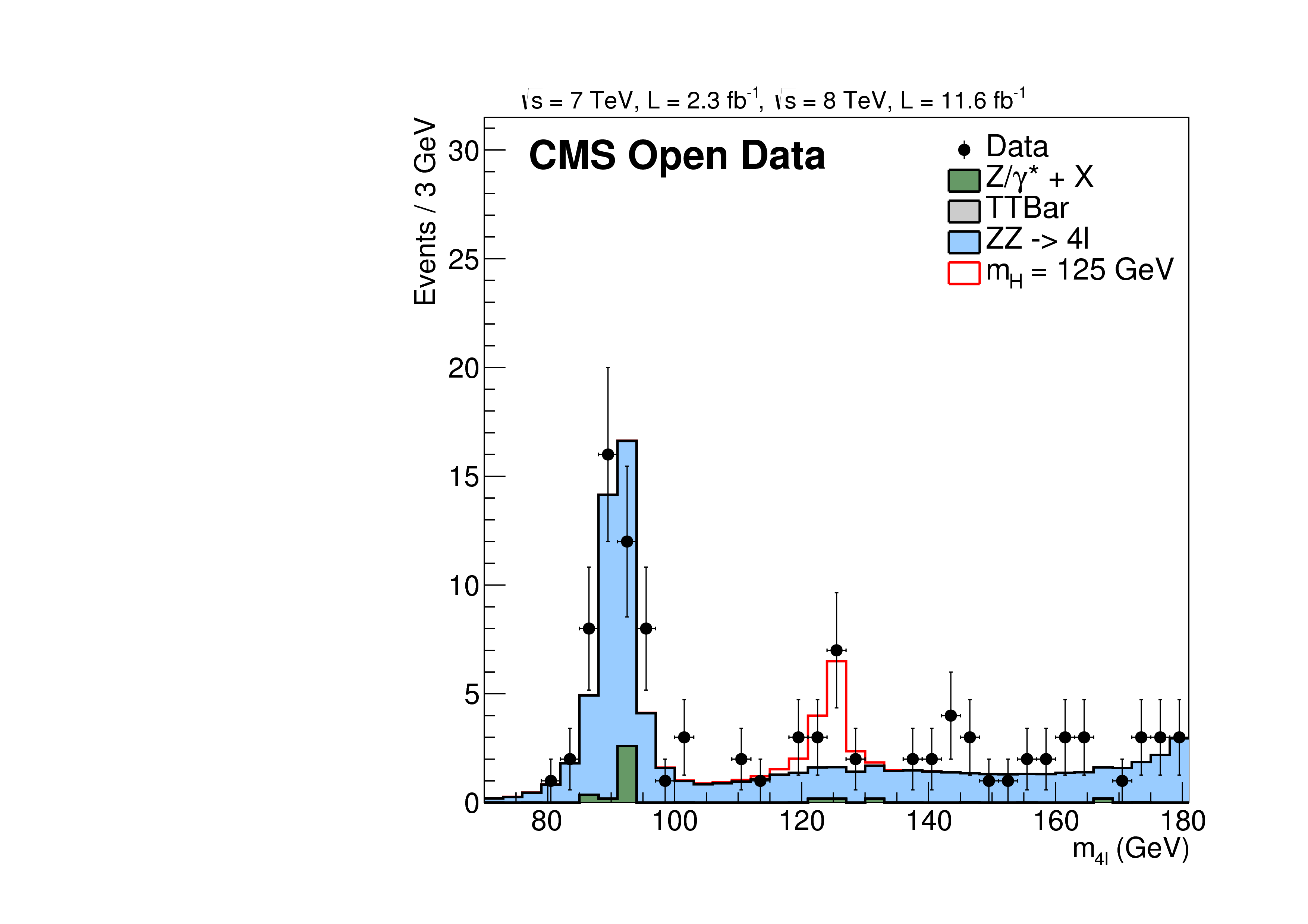|
Bachelor project (experimental CMS): (or parts as internship/summer student project)Combined Z to two lepton and Higgs to four lepton distributions from CMS and ATLAS (Open) Data  
Abstract/Physics motivation:Higgs to four lepton distributions from CMS Run I Open Data, and Z to two lepton distributions from both CMS and ATLAS Open Data were already studied in previous (summer student) projects. All relevant Higgs data from both Run 1 and Run 2 have already been published by both collaborations. ATLAS has recently released the full 2016 subset of their two- and four-lepton data for educational purposes, sufficiently detailed for the purpose of this project. CMS has recently significantly extended its full research grade Open Data sets, about doubling the available statistics. More will be released by the ned of 2023. For CMS-internal purposes, the full statistics of all Run 1 and Run 2 data sets is available. Producing combined two- and four-lepton mass distributions from CMS and ATLAS, adapting the already existing tools to all available Open Data statistics, will set benchmarks for potential common analysis of CMS and ATLAS Open Data. For LHCb, corresponding dilepton data are also available since end of 2022. Adding all the available not yet open CMS data can yield Z and Higgs distributions with the highest statistics ever produced (for internal purposes until either the data are released or the collaborations agree to make the plots public). The results will also be used for the benchmarking of the respective detector resolutions and for the validation of alignment calibration studies.
Short description of the project the student should work on:
possibly with associated charm production, including CMS, ATLAS and LHCb Open Data The world's highest statistics Higgs and Z mass distributions; The world's only public Higgs and Z mass distributions from more than one experiment; Learning/working with ROOT and C++; validation of nanoAODplus and nATLASAOD; comparison of detector resolutions; Bonus: Search for Z+J/psi, Z+Upsilon, H->ZZ*->Z+J/psi, H->ZZ*->Z+Upsilon (technically member of CMS collaboration) |